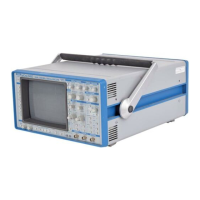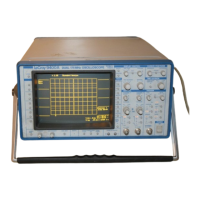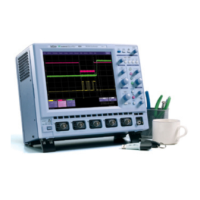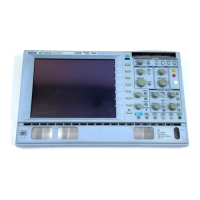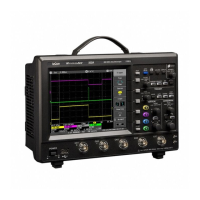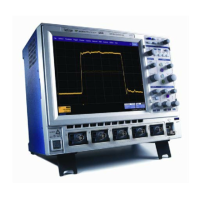8–11
Applications In digital electronics circuits normally use an internal clock, and for
testing purposes a glitch can be defined as any pulse of width smaller
than the clock- or half-period. But generally speaking a glitch is a pulse
much faster than the waveform under observation. Glitch Trigger thus
has a broad range of applications in digital and analog electronic
development, ATE, EMI, telecommunications, and magnetic media
studies.
This Glitch Trigger selects a maximum pulse width (Fig. 8–7). It is
generated on the selected edge when the pulse width is less than the
selected width. The timing for the width is initialized and restarted on the
slope opposite to the edge selected. Widths of between 2.5 ns and 20 s
can be selected, but typically triggering will occur on glitches 1 ns wide.
Figure 8–7. Glitch Trigger on pulse width < selected width.
Pulse Smaller than
Selected Pulse Width
Glitch
width
Generated Trigger
Glitch width
Selected width
Trigger Source
Trigger can occur
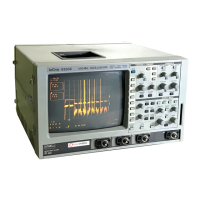
